Abstract
OBJECTIVE: To describe women's experiences with expectant management of spontaneous abortions. DESIGN: Descriptive survey using questionnaires with fixed-choice and open-ended questions. The latter were analyzed for themes, using qualitative methods. SETTING: Urban and suburban private primary care family practices. PARTICIPANTS: A convenience sample of family practice patients (59 of 80 eligible) pregnant for less than 12 weeks who had spontaneous abortions without surgery. Response rate was 84.7%; 50 questionnaires were received from the 59 women. METHOD: Women were asked about their physical experiences, including amount of pain and bleeding; emotional effects; their satisfaction with medical care; and their suggestions for improving care. MAIN FINDINGS: The mean worst pain experienced during a spontaneous abortion on an 11-point scale was 5.9. Bleeding varied, but was often very heavy. Satisfaction rate was 92.9% with family physician care and 84.6% with hospital care. Women described the emotional effect of "natural" spontaneous abortions and made recommendations for improving care. CONCLUSIONS: A better understanding of the physical and emotional experiences of the women in this study might help physicians better prepare and support patients coping with expectant management of spontaneous abortions.
Full text
PDF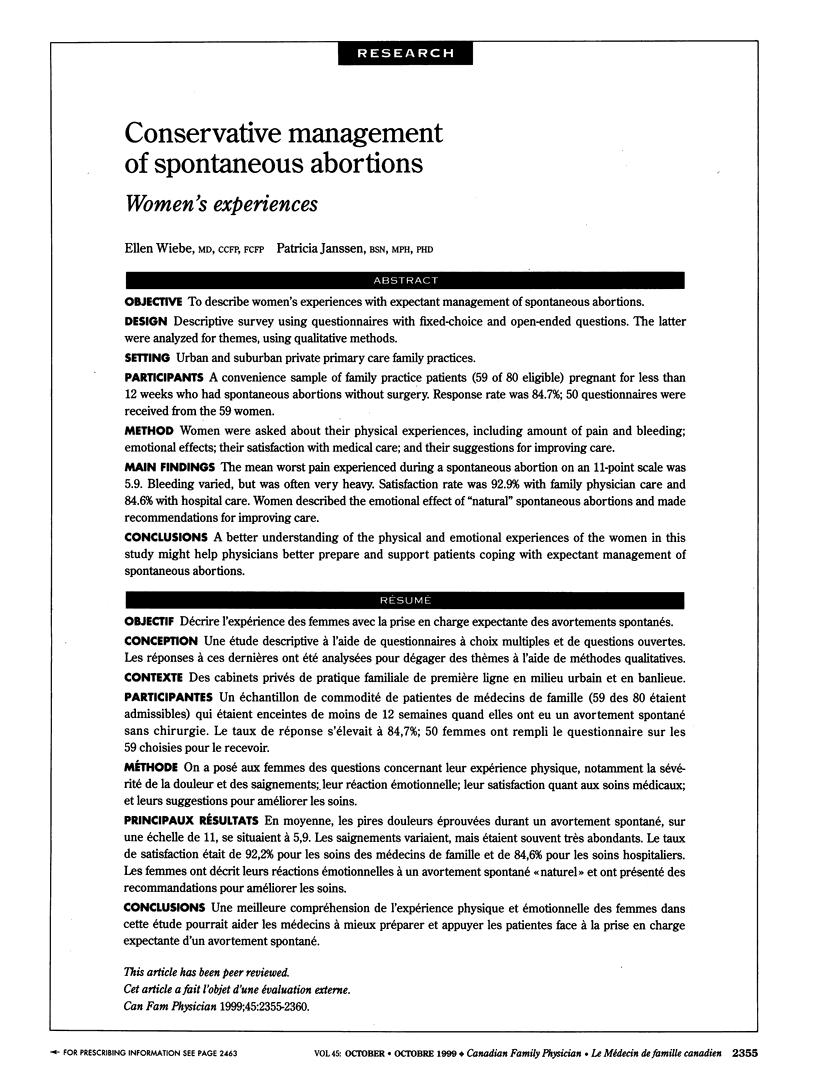
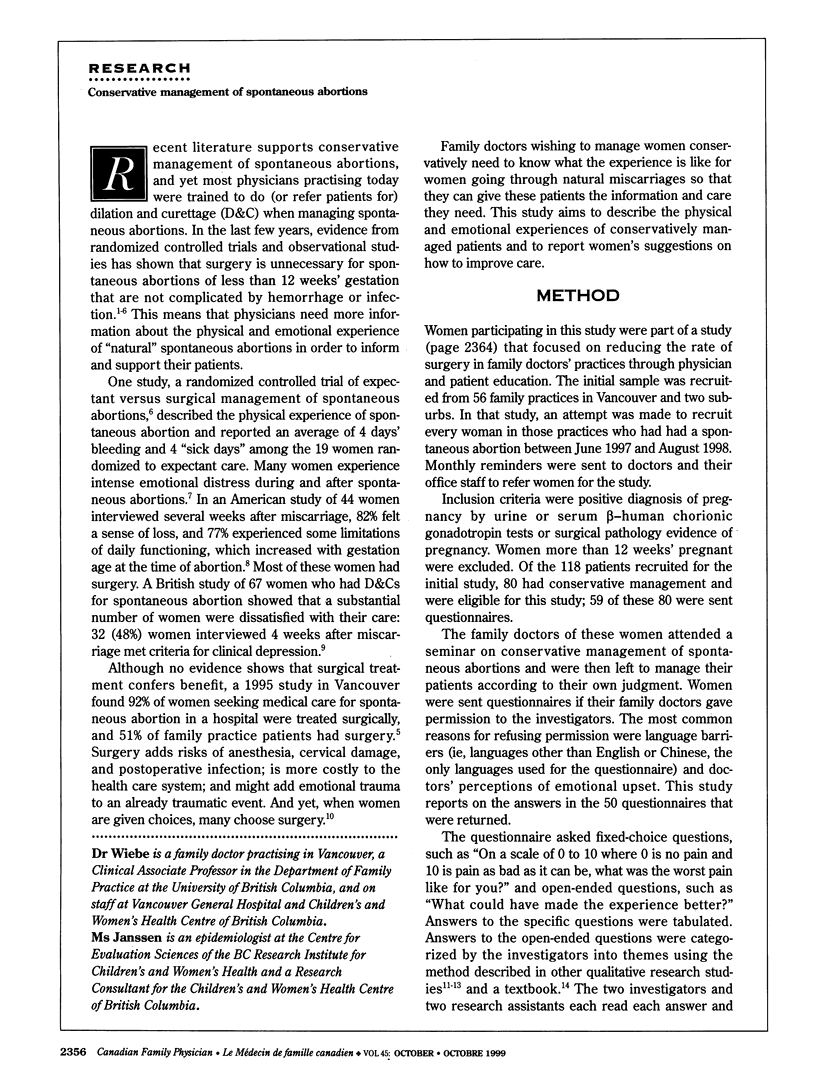
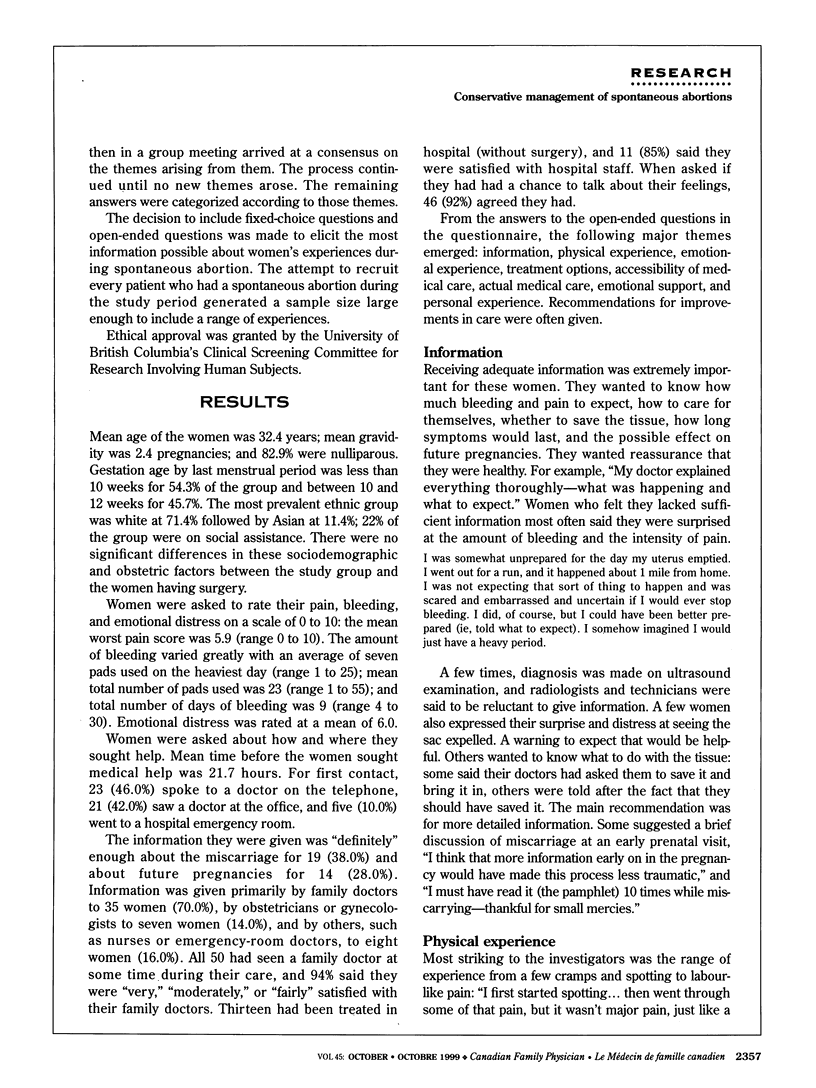
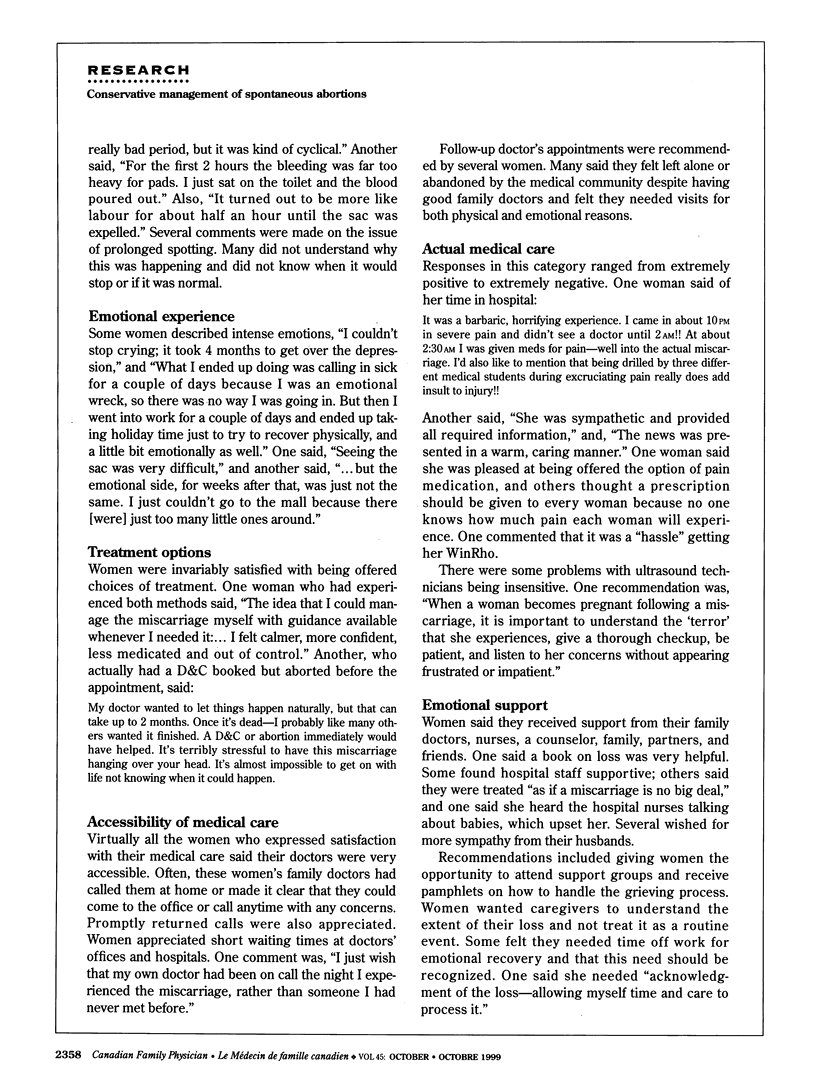
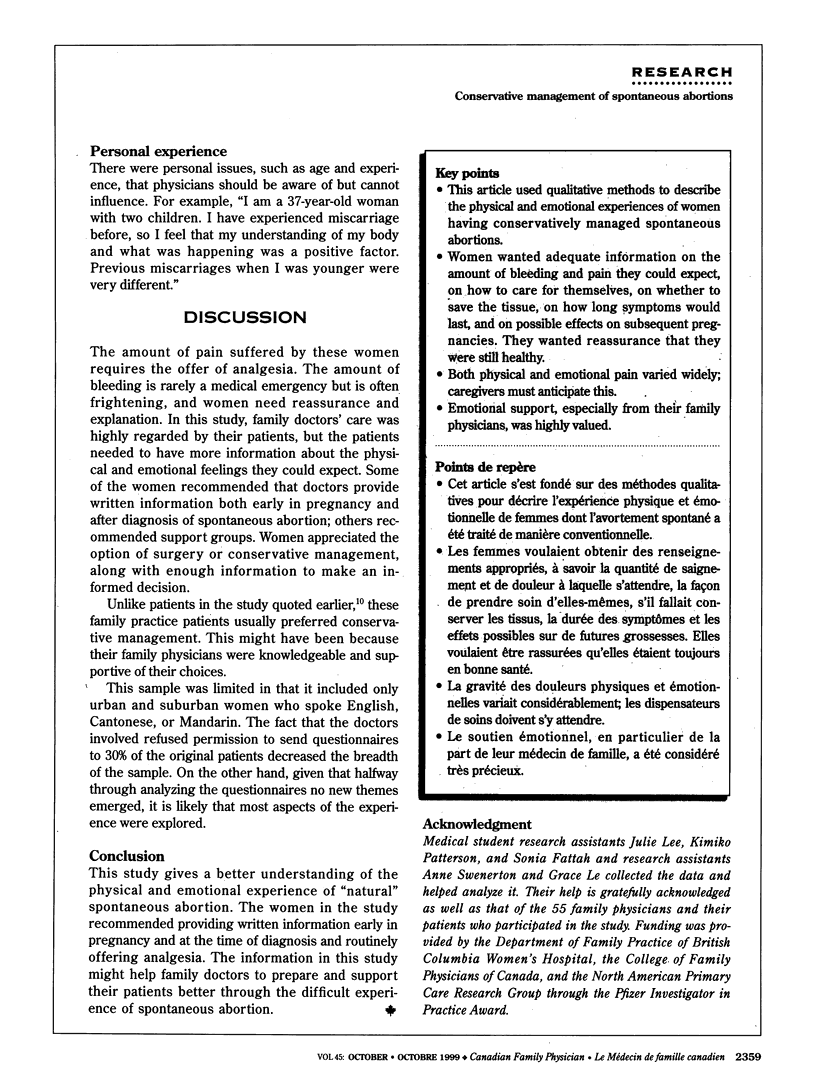

Selected References
These references are in PubMed. This may not be the complete list of references from this article.
- Ben-Baruch G., Schiff E., Moran O., Menashe Y., Mashiach S., Menczer J. Curettage vs. nonsurgical management in women with early spontaneous abortions. The effect on fertility. J Reprod Med. 1991 Sep;36(9):644–646. [PubMed] [Google Scholar]
- Borkan J., Reis S., Hermoni D., Biderman A. Talking about the pain: a patient-centered study of low back pain in primary care. Soc Sci Med. 1995 Apr;40(7):977–988. doi: 10.1016/0277-9536(94)00156-n. [DOI] [PubMed] [Google Scholar]
- Chipchase J., James D. Randomised trial of expectant versus surgical management of spontaneous miscarriage. Br J Obstet Gynaecol. 1997 Jul;104(7):840–841. doi: 10.1111/j.1471-0528.1997.tb12030.x. [DOI] [PubMed] [Google Scholar]
- Friedman T. Women's experiences of general practitioner management of miscarriage. J R Coll Gen Pract. 1989 Nov;39(328):456–458. [PMC free article] [PubMed] [Google Scholar]
- Jurkovic D., Ross J. A., Nicolaides K. H. Expectant management of missed miscarriage. Br J Obstet Gynaecol. 1998 Jun;105(6):670–671. doi: 10.1111/j.1471-0528.1998.tb10184.x. [DOI] [PubMed] [Google Scholar]
- Karlson E. W., Daltroy L. H., Liang M. H., Eaton H. E., Katz J. N. Gender differences in patient preferences may underlie differential utilization of elective surgery. Am J Med. 1997 Jun;102(6):524–530. doi: 10.1016/s0002-9343(97)00050-8. [DOI] [PubMed] [Google Scholar]
- Mansur M. M. Ultrasound diagnosis of complete abortion can reduce need for curettage. Eur J Obstet Gynecol Reprod Biol. 1992 Mar 23;44(1):65–69. doi: 10.1016/0028-2243(92)90315-p. [DOI] [PubMed] [Google Scholar]
- Nielsen S., Hahlin M. Expectant management of first-trimester spontaneous abortion. Lancet. 1995 Jan 14;345(8942):84–86. doi: 10.1016/s0140-6736(95)90060-8. [DOI] [PubMed] [Google Scholar]
- Seidl M. M., Stewart D. E. Alternative treatments for menopausal symptoms. Qualitative study of women's experiences. Can Fam Physician. 1998 Jun;44:1271–1276. [PMC free article] [PubMed] [Google Scholar]
- Speraw S. R. The experience of miscarriage: how couples define quality in health care delivery. J Perinatol. 1994 May-Jun;14(3):208–215. [PubMed] [Google Scholar]
- Wiebe E., Janssen P. Management of spontaneous abortion in family practices and hospitals. Fam Med. 1998 Apr;30(4):293–296. [PubMed] [Google Scholar]
- Zaccardi R., Abbott J., Koziol-McLain J. Loss and grief reactions after spontaneous miscarriage in the emergency department. Ann Emerg Med. 1993 May;22(5):799–804. doi: 10.1016/s0196-0644(05)80794-2. [DOI] [PubMed] [Google Scholar]


